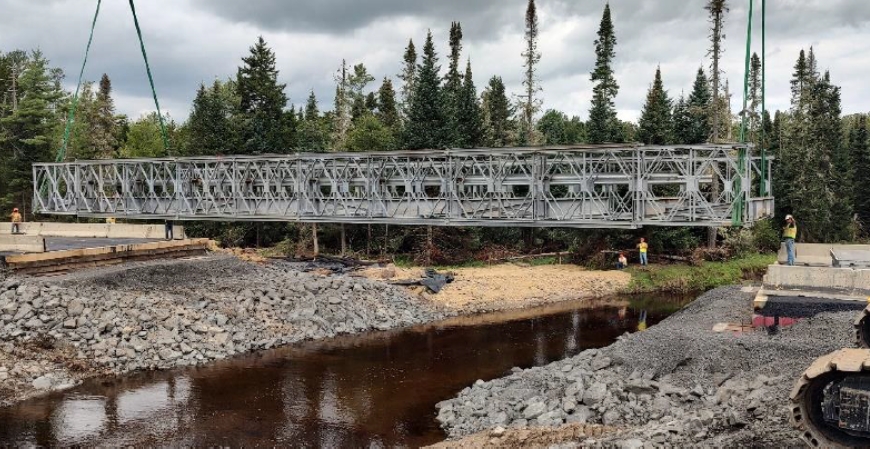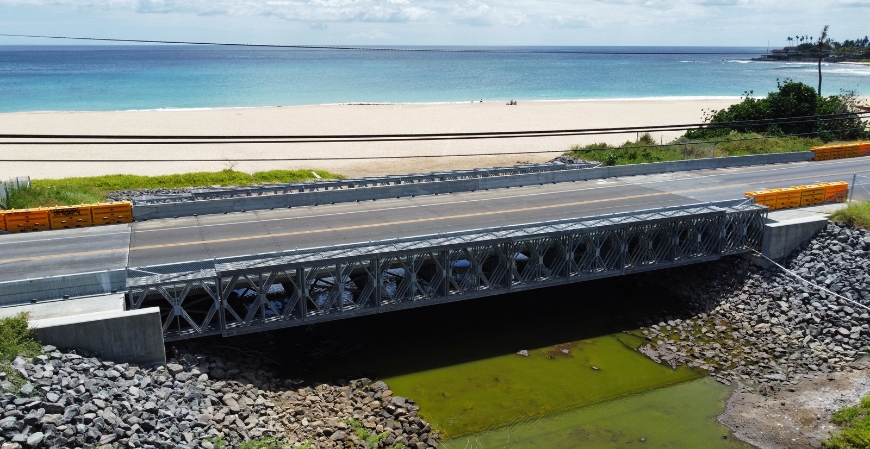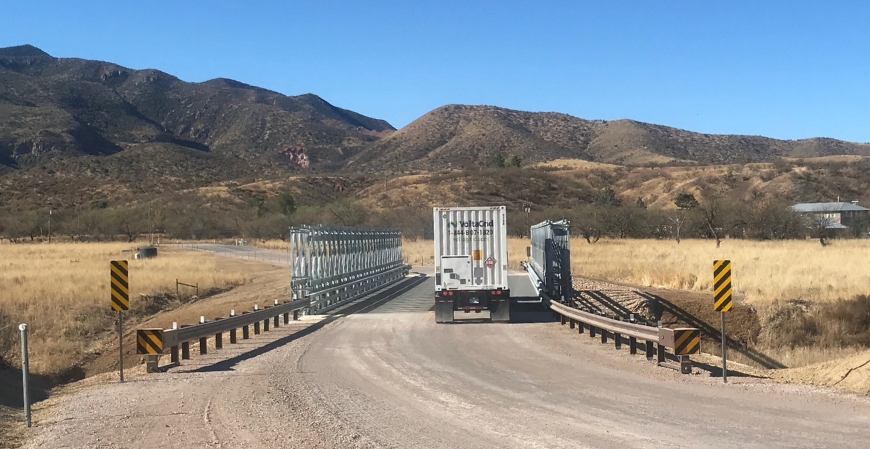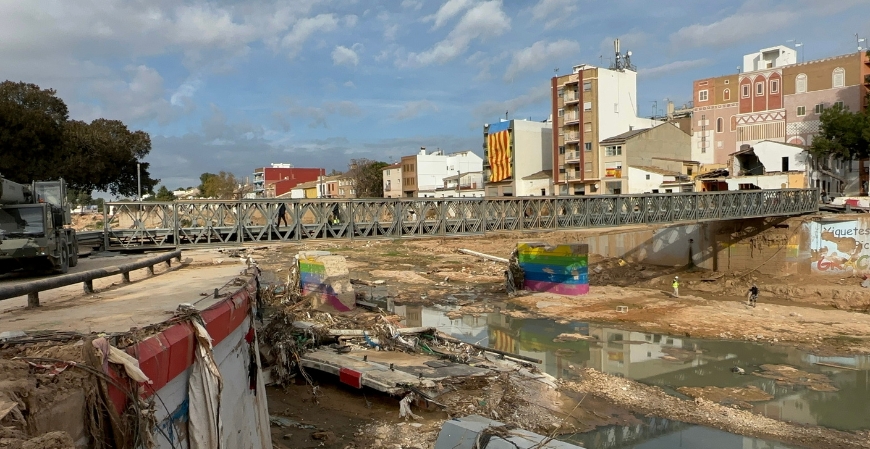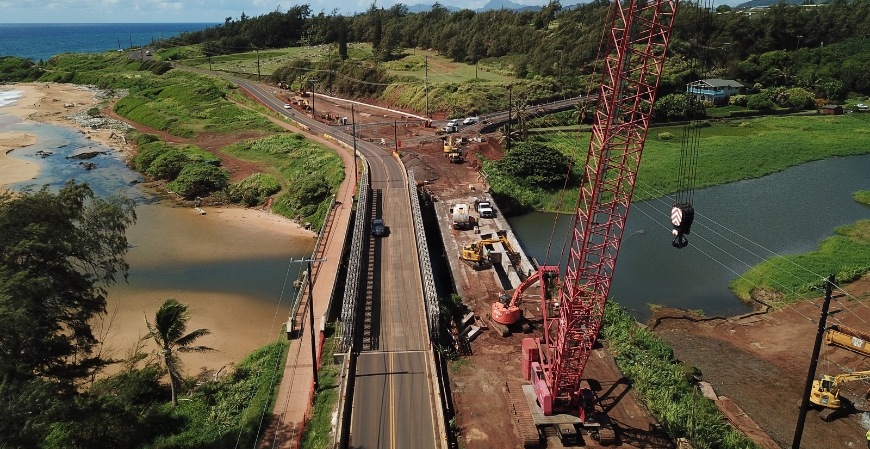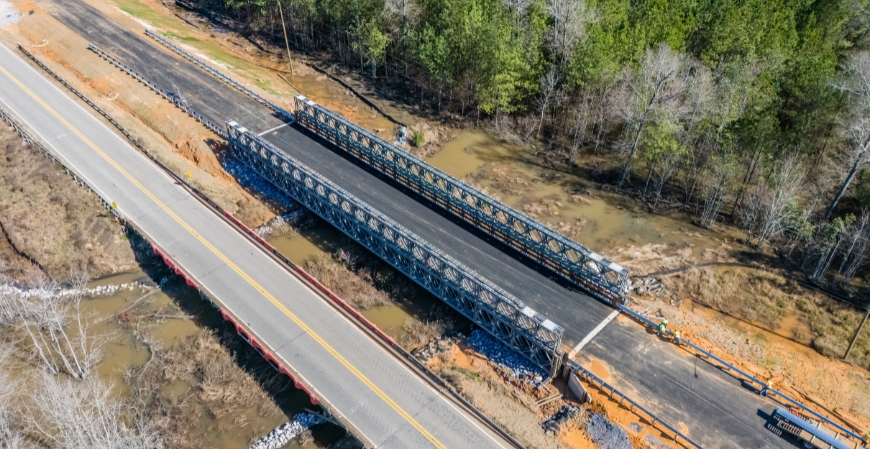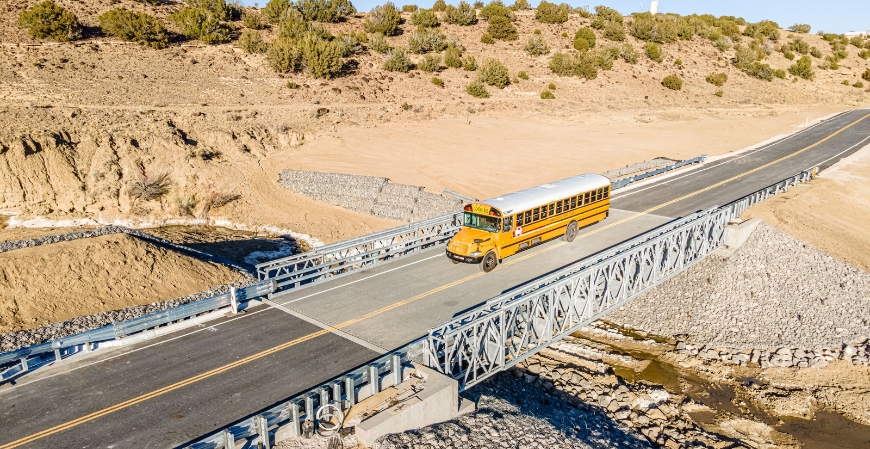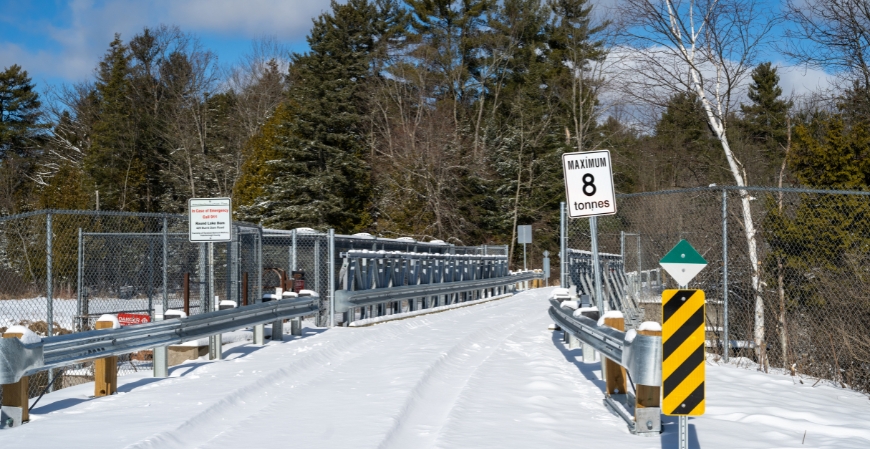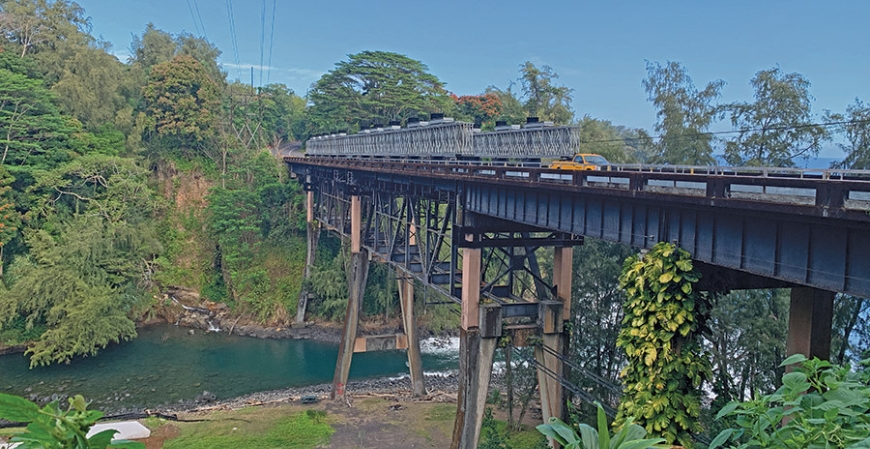Innovative solution solves construction challenges at the remote site of the Kealakaha Stream Bridge on the Island of Hawaii
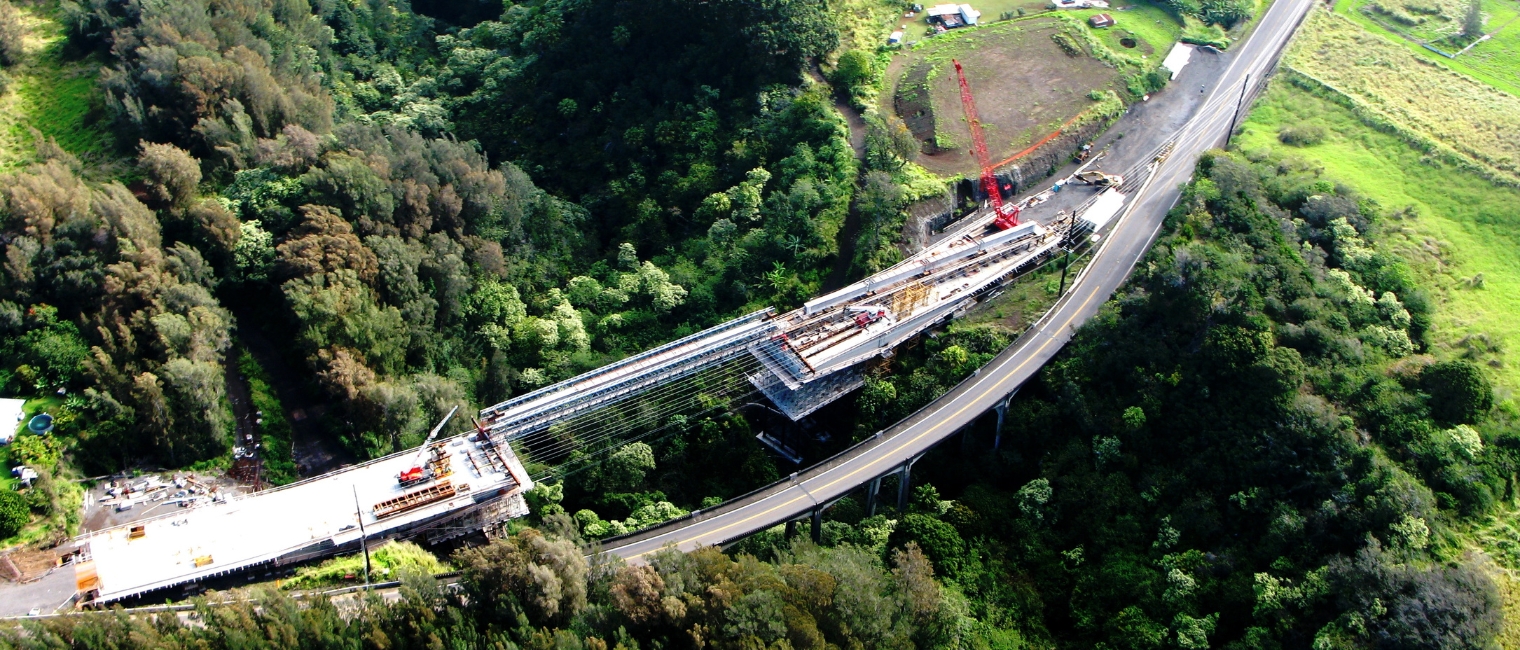
Modular Acrow Trusses Reduce Cost and Help Save the Environment
Located on Hawaii Belt Road, the Kealakaha Stream Bridge traverses a 165 foot deep and 610 foot wide ravine to provide for traffic traveling from Hilo in the Northeast, to the northern part of the island.
Due to site constraints, the replacement bridge needed to be built from the top down. Additionally the bridge is close to an active volcano and subject to high seismic activity. Consequently, a concept was developed to use a longitudinally spliced, post-tensioned girder bridge that would be easier to construct given the site constraints.
This type of construction typically uses large cranes to lower the precast sections into the space but large cranes are expensive to mobilize. Given the remote location of the island, the only access is by ship. Shipping cranes are billed out on a day rate so getting them to the island and back could be cost prohibitive. Additionally, utilizing cranes would require cutting into the ravine to build a crane pad and a road leading to the crane pad. Not only is this a costly endeavor, it would also have a significant environmental impact.
In 1996 Washington State DOT developed a “super girder” which was capable of spanning approximately 200 feet and could be cantilevered from each pier, a perfect solution for this project. However, due to sharply curved roads leading to the bridge site, the maximum length of precast girder segments that could be transported to Kealakaha Stream was about 55 feet. In order to produce the required 210 foot long girders, 52.5 foot long precast concrete segments were spliced together and post tensioned at the bridge site. The concrete super girder with launching platforms and equipment weighed 358 kips. This was a very large beam.
Acrow’s modular trusses were used to build a launching truss, which sat on rollers and could move laterally. The spliced and post-tensioned concrete girders were loaded onto the truss and moved into place. A strand jack on each end was used to lift the girders off the Acrow truss, which was then was moved to one side. The girders were then lowered onto their respective corbels. This process was repeated until all six girders were in place.
The use of Acrow trusses cost the contractor and the State of Hawaii $500,000 out of a $9 million Value Engineering Cost Proposal (split 50/50). Acrow’s cost included extra engineering, a year’s worth of rent, launching the structure into place, on-site technical assistance and freight of the parts to the island and back to the mainland. In total, including special engineering using finite element analysis and best practices, Acrow was able to provide a safe and efficient method to place the girders at a fraction of the cost.
